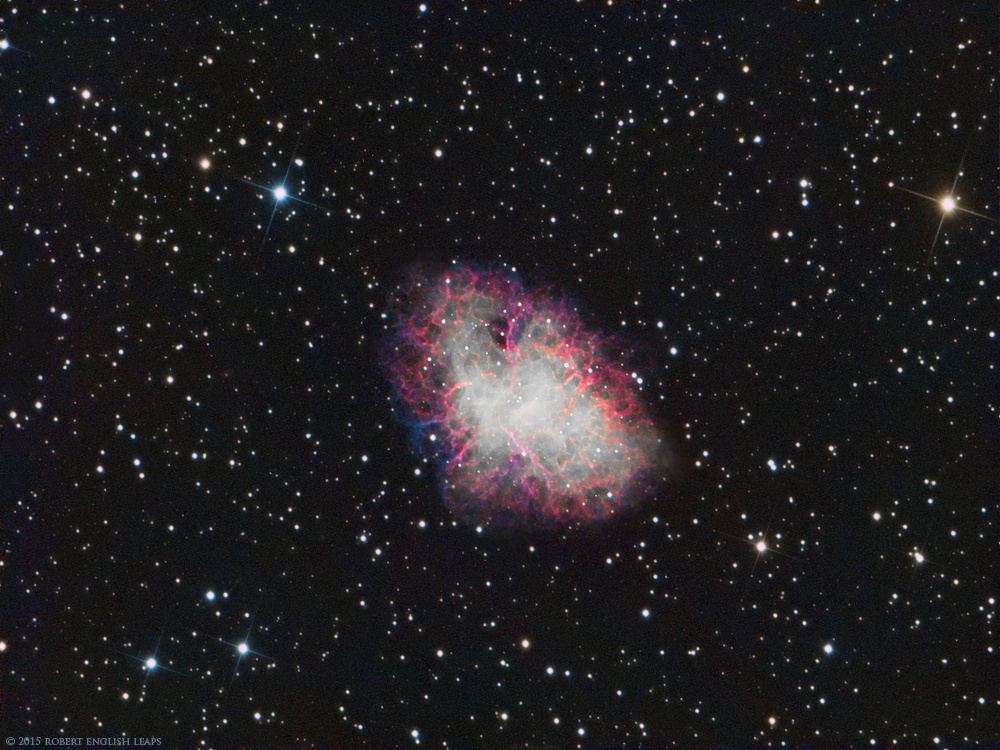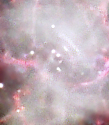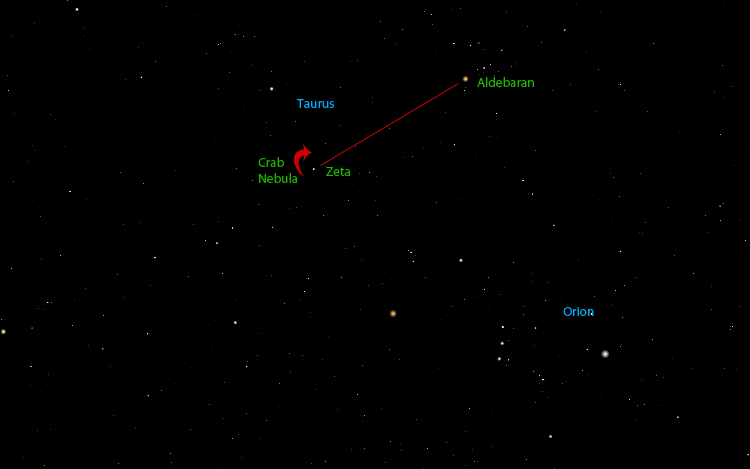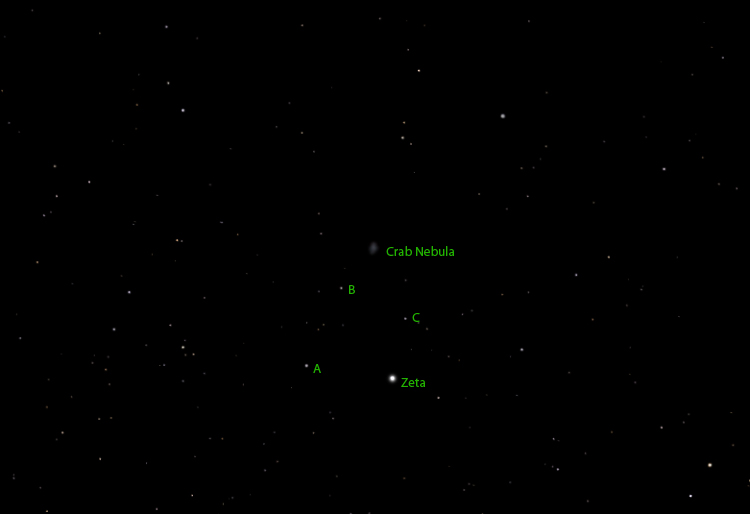The image at right is a full scale detail of the center of our image above. The pulsar is the lower of the two brighter stars slightly above the center of the image. The field has been rotated 90 degrees clockwise to roughly match the orientation of the two video links below. Hubble imaged the nebula in visible light on 24 occasions from August 2000 till April 2001 at 11 day intervals. The Chandra images (X-ray) were taken on 8 occasions between November 2000 and April 2001. Some of the shock wave features can be seen in the image at right. To view the video, click here. This video is in QuickTime format - you may need to download QuickTime to view it. Heartbeat of a Pulsar: The amazing video below was made by the "Lucky Imaging" team from Cambridge University, using the 2.5 meter Nordic Optical Telescope (NOT) on the Canary Islands . It shows not only the main pulse of the crab nebula pulsar but also a faint secondary pulse. The video shows the pulse in slow motion. If your browser will not show the video below, you can see it at the Lucky Imaging Team Home Page here.
Finding the Crab Nebula: Below are two charts showing the location of the crab nebula in the night sky. If you click on either chart you will be taken to a printable negative image, with black stars on a white background. The top image shows a wide field view. If you look overhead in mid-February around 7:30pm, the crab nebula will be approximately overhead. It can be faintly seen in binoculars, but a telescope will give you a better view. First find the bright orange-tinted star Aldebaran in Taurus. The stars of the constellation Orion will help orient you in the sky. Aldebaran and the stars around it form a "V" . Follow the line of stars of the side of the "V" that Aldebaran is in, and extend the line to find Zeta Tauri. Once you find this star, use the lower image, which has a field of view comparable to binoculars or a finder scope.
First find zeta in your binoculars, then close to zeta, find the stars A, B and C. These, with zeta, form a small squarish figure. Star C is faintest. Once you've located these stars, use them to place the location of the crab nebula in the center of the field of view. With binoculars, you may only be able to see the faint glow of the nebula with averted vision. In this case, you will be looking to one side of the nebula's position (experiment) rather than looking directly at it. This brings the more sensitive "rod" cells of your eye into play. With finder telescopes you may just have to point the scope at the position of the nebula, then check through the main scope. You will mainly see the low contrast synchrotron radiation, as the tendrils of nebulosity are quite faint. In larger scopes the nebulosity looks to me a little like an interstellar rabbit! The pulsar is around 16th magnitude, and not visible except in large scopes (20" range) in dark skies. Tracking down the 110 Messier Objects can be a fun way to learn your way around the sky. We recommend taking your time doing this and savoring each object. A large telescope is not required - many of the objects can be seen with binoculars, some with the naked eye, and all can be seen with a 2" aperture telescope in dark skies. It's also fun to keep a log of the dates the objects were seen, the location, the instrument(s) , the weather, who you were with, the ease or difficulty of the sighting, and anything else you want to note. By the time you complete the list your finding and observing skills will be much sharper, and you will have some really nice memories of evenings under the stars. |
||||||||||||||||||||||||||||||||||||||||||||




